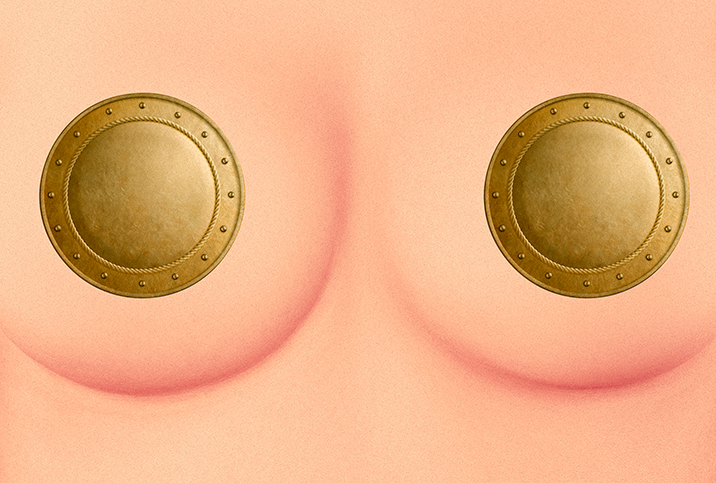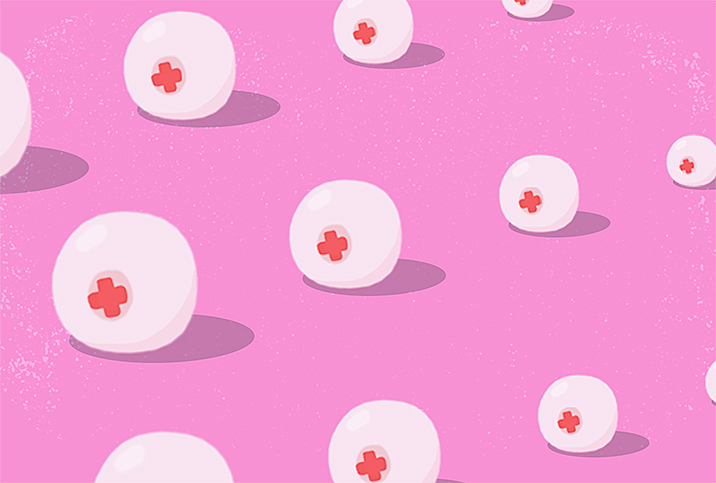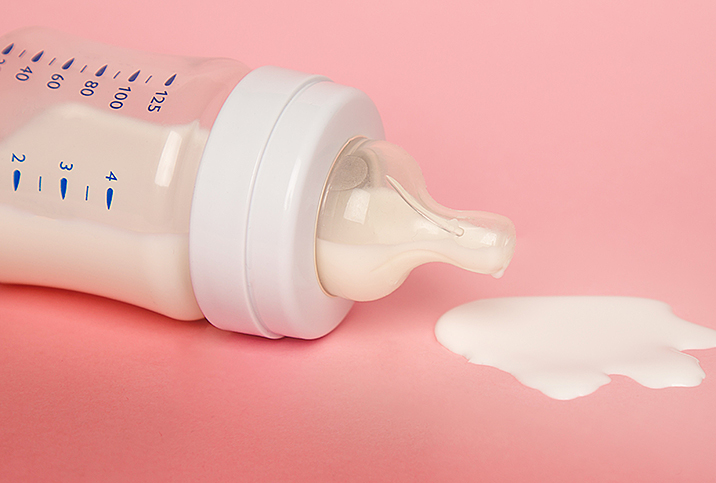Nipple Shields Can Be a Lifesaver for Some Breastfeeding Moms

New parents may face several hurdles when breastfeeding—and nipple discomfort caused by flat, inverted or severely cracked nipples is just one of them. Nipple shields may help.
Nipple shields work by covering the nipple as well as part of the areola, and they can aid with the latch during breastfeeding. They are made from thin silicone and come in different sizes to suit a variety of nipples.
If you're debating whether to use nipple shields, or not sure how to use them, don't fret. We talked to the experts.
Advantages of nipple shields
Two of the main uses of shields are for flat or inverted nipples, or if the baby has issues with latching.
"Nipple shields can be useful when breastfeeding a baby who is premature," said Asahela Rose, a board-certified lactation consultant and director at London-based Rosebuds Lactation Consultancy. "Research has shown that there is an increase in milk consumption when used for premature babies."
The nipple shields can also act as a good short-term solution if your child has any issues that need addressing, but you need to maintain milk supply and continue to feed in the meantime.
"Babies who have a tongue tie can benefit from shields whilst suitable treatment plans are being considered," said Lindsey Shipley, R.N., a board-certified lactation consultant and founder of Lactation Link, based in Utah.
For new moms determined to breastfeed, a nipple shield can help accomplish this and avoid bottle feeding if the baby is able to get milk from it effectively.
I can attest to that. My baby had a tongue tie, and I used nipple shields to feed and successfully transferred him a few weeks later onto the breast.
It's important to know that not all shields are made alike, and it's crucial to look at the shape and size before you buy. I learned this the hard way as I bought several that didn't fit my nipples, which meant they either fell off or didn't fill the shield when the baby tried to feed. It can be difficult to find the correct size, but focus on ensuring your nipple can be completely inside and fill the shield comfortably.
For new moms determined to breastfeed, a nipple shield can help accomplish this and avoid bottle feeding if the baby is able to get milk from it effectively. Additionally, babies who struggle to latch can learn how to breastfeed just as with the actual nipple.
"The nipple shield maintains breast focus, keeping baby at the breast, learning to breastfeed and stimulating milk production," Shipley said.
Disadvantages of nipple shields
There are several disadvantages to using nipple shields, including that they can be awkward to use and can tamper with milk production.
"It can be difficult to wean your baby from the nipple shields, and your baby may get less milk if not used correctly," Rose said.
If the milk is not transferring from your breast to the baby, that can have consequences for their health and yours. The key is to look for milk inside the shield and check if your baby is swallowing. And it's important to weigh the baby and check that they're producing enough dirty diapers to ensure they're being fed correctly.
Rose noted that when a nipple shield doesn't work and blocks production, you're at risk for blocked ducts and mastitis, which can be very painful. If left untreated, it can also lead to an abscess.
Not for everyone
Reviews of nipple shields are mixed, with many parents admitting that even though they generally worked, the shields came with frustrations.
"My baby struggled to latch, so I tried nipple shields and they did work," said Claire Stapleton, a copywriter and blogger in the United Kingdom. "However, I found them quite tricky to attach and they weren't practical for use when I was out and about.
"I've had a number of friends who have tried them, too, and nobody I know has used them for long," Stapleton added.
UK-based parenting and lifestyle blogger Anna Marikar didn't get on with shields when she tried them, either.
"I heard that they were a really useful tool so I made sure to buy them, but I felt like they just added another layer of confusion to something that was new and tricky to get used to," she said.
Tips for new moms
Nipple shields aren't for everyone, but if you are considering purchasing the shields, here are some tips to keep in mind:
- Keep it clean. It's important to sterilize the shields just as you would bottles and dummies.
- Have a spare. As the shields are see-through, they can drop on the floor and be difficult to find at night. Keeping a spare pair at your bedside might help so you don't have to clean them at 2 a.m.
-
It may take a while for your baby to transfer to your breast. It's not always simple for a baby to adjust if they're used to one way of feeding. "It's hard to say whether it will take a few feeds or several weeks to wean your baby from needing the nipple shield to latching to the bare breast," Shipley warned.
-
Don't buy them unless necessary. While shields may seem like an "essential," there is no point in buying them unless you're having difficulties and are advised to try them. "Nipple shields are a breastfeeding aid and should only be used if you are having difficulties," Rose said. "There may be a temptation to use them in the early days to 'avoid' nipple damage before any actual damage has occurred and this is not the correct way to use them."
-
Seek professional advice. Rose advised seeking help from a qualified lactation consultant if you are struggling with breastfeeding. Shipley agreed it's worth identifying the cause of your breastfeeding problems before making the decision to use shields or not. "If someone recommends using one right away, you might want to ask, 'Is there anything else I can try first?'" Shipley said.
In case you do need shields to breastfeed, and they work well for you, then don't worry.
"If a nipple shield is needed in your situation, remember that many families have utilized nipple shields from a few days to many months and had successful, joyful breastfeeding experiences," Shipley concluded.

















